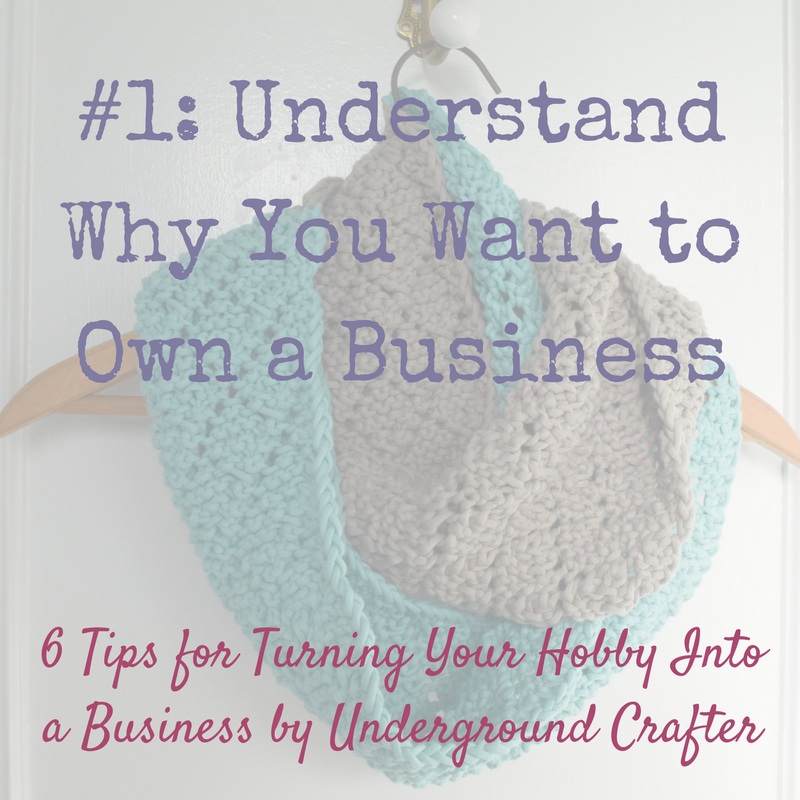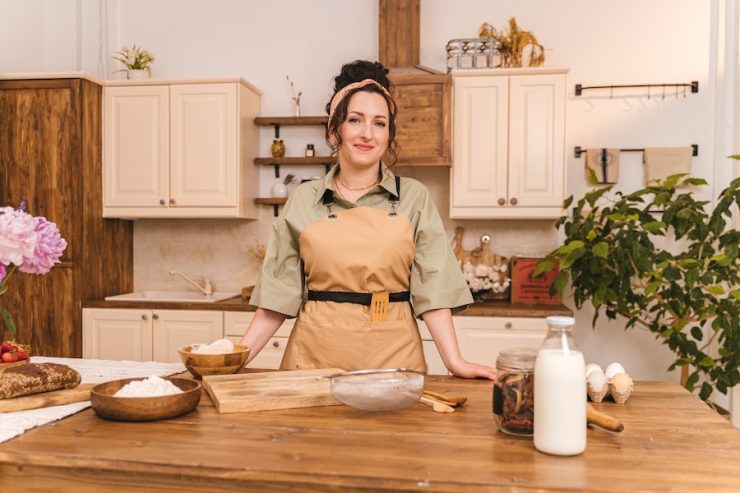Are you a creative soul with a passion for crafting? Maybe you’re spending countless hours indulging in your hobby, making beautiful items that bring joy to your friends and family. But what if I told you that your crafting skills could also become a lucrative side hustle? In this article, we will explore the journey from hobbyist to entrepreneur, providing you with valuable tips and insights on how to turn your crafts into a profitable business venture. Get ready to unleash your creativity and transform your passion into a thriving source of income!

1. Choosing the Right Craft
Identify your passions and skills
When considering turning your crafts into a side hustle, it’s important to start by identifying your passions and skills. What craft brings you the most joy? What are you naturally good at? By choosing a craft that aligns with your interests and talents, you’ll be more motivated to put in the time and effort required to turn it into a successful business.
Research market demand
Once you’ve identified a craft you’re passionate about, it’s important to research the market demand for your chosen product. Is there a demand for your craft in your local area or online? Are there already a lot of sellers offering similar products? Understanding the market demand will help you determine if there is a viable opportunity to sell your crafts and ensure that there is a potential customer base.
Consider the cost and time commitment
Before fully committing to turning your crafts into a side hustle, it’s crucial to consider the cost and time commitment involved. Take into account the cost of materials, tools, and any other expenses associated with your craft. Additionally, think about how much time you are willing and able to dedicate to your side hustle. Understanding the financial and time-related implications will help you make an informed decision and set realistic expectations.
2. Developing Your Craft
Invest in quality materials and tools
To create high-quality crafts, it’s important to invest in quality materials and tools. While it may be tempting to opt for cheaper options, using subpar materials and tools can result in a lower-quality end product. Invest in materials and tools that will provide longevity and enhance the overall quality of your crafts.
Practice and improve your skills
Crafting is a skill that can always be improved. Dedicate time to practicing and honing your craft. Explore different techniques and styles to expand your skill set and keep your crafts fresh and unique. Seek out tutorials, workshops, and online resources that can help you learn new skills and techniques. The more you practice and improve, the better your crafts will be, and the more likely you are to attract customers.
Experiment with different techniques and styles
Don’t be afraid to experiment with different techniques and styles in your crafting. This will allow you to develop your own unique signature style and stand out from the competition. Embrace creativity and innovation, and don’t be afraid to step outside of your comfort zone. Experimentation can lead to exciting discoveries and help fine-tune your craft.

3. Setting Up Your Workspace
Designate a dedicated area
When turning your crafts into a side hustle, it’s important to designate a dedicated area for your crafting activities. This will help you stay organized and focused. Whether it’s a spare room, a corner of your living space, or a studio, having a designated area will allow you to create a productive environment and separate your work from your personal life.
Organize and optimize your workspace
Keeping your workspace organized and optimized is essential for efficiency and productivity. Invest in storage solutions that can help you keep your materials, tools, and supplies neatly organized and easily accessible. Create a system that works for you, and make sure to maintain it consistently. This will save you time and prevent frustration when working on your crafts.
Ensure proper lighting and ventilation
Good lighting and ventilation are important factors to consider when setting up your workspace. Proper lighting will ensure that you can see your crafts clearly, preventing any mistakes or accidents. Natural light is ideal, but if it’s not available, invest in good quality artificial lighting. Additionally, adequate ventilation will help create a comfortable and safe working environment, especially if you’re working with materials or chemicals that emit fumes.
4. Building Your Brand
Choose a catchy and memorable name
Building a strong brand is crucial for the success of your crafting business. Start by choosing a catchy and memorable name that reflects your craft and resonates with your target audience. Your business name should be easy to remember, spell, and pronounce. It should also convey a sense of creativity and professionalism.
Create a logo and consistent visual identity
A logo and consistent visual identity will help establish your brand and create a professional look for your crafting business. Invest in creating a logo that represents your craft and aligns with your brand values. Use cohesive colors, fonts, and design elements across all your branding materials, including your packaging, website, social media profiles, and any other promotional materials.
Establish your brand values and story
Define your brand values and story to give your crafting business a unique identity and connect with your customers on a deeper level. What makes your craft special? Why do you do what you do? Communicate your brand values and story through your marketing materials, website, and social media. This will help differentiate your business and create a loyal customer base.
Develop a unique selling proposition
In a competitive market, having a unique selling proposition (USP) is essential. Determine what sets your crafts apart from others and why customers should choose your products over competitors. Whether it’s the quality of your materials, the customization options you offer, or your exceptional customer service, clearly communicate your USP in your marketing efforts to attract customers and create brand loyalty.

5. Pricing Your Crafts
Calculate your costs and expenses
Before setting your prices, it’s important to calculate your costs and expenses. Consider the cost of materials, tools, packaging, labor, and any other expenses involved in creating your crafts. This will help you determine a baseline cost for your crafts and ensure that you’re covering your expenses.
Research the market prices
Researching the market prices for similar crafts is crucial to ensure that your pricing is competitive. Look at what other sellers are charging for similar products in your local area and online. Consider the quality of their crafts, the target market they’re serving, and any additional value they provide. This will give you a better understanding of the price range you should aim for.
Determine your profit margin
Once you have calculated your costs and researched the market prices, it’s time to determine your desired profit margin. Consider your time and effort involved in creating each craft, as well as any unique features or value you provide. Set a profit margin that allows you to cover your expenses and make a reasonable profit.
Consider offering different price points
To cater to a wider range of customers, consider offering different price points for your crafts. This can include offering both high-end, premium products and more affordable options. By diversifying your price range, you can attract a larger customer base and increase your chances of making sales.
6. Marketing and Promotion
Create an online presence (website, social media profiles)
In today’s digital age, having an online presence is crucial for the success of your crafting business. Create a professional website that showcases your crafts, provides information about your business, and allows customers to make purchases online. Additionally, establish active social media profiles on platforms that align with your target audience to engage with potential customers and share updates about your products.
Share high-quality product photos and videos
High-quality product photos and videos are essential for showcasing the beauty and craftsmanship of your products. Invest in a good camera or smartphone and learn the basics of product photography. Capture your crafts from different angles, in various settings, and in good lighting to highlight their unique features. Consider creating videos of your crafts in action to provide a more immersive experience for potential customers.
Connect with potential customers through networking
Networking is a powerful tool for promoting your crafting business and connecting with potential customers. Attend craft fairs, exhibitions, and local community events to showcase your crafts and interact with people in your target market. Join online communities and groups related to your craft to engage with like-minded individuals and build a network of potential customers and collaborators.
Participate in craft fairs and exhibitions
Craft fairs and exhibitions provide excellent opportunities to showcase and sell your crafts. Research and participate in local and regional craft fairs and exhibitions that align with your target market. Prepare an attractive booth or display, bring a variety of your crafts, and engage with attendees to generate interest and sales. These events also allow you to gather feedback from customers and gauge market demand for your products.

7. Selling Your Crafts
Choose the right sales channels (online marketplaces, local stores)
When it comes to selling your crafts, it’s important to choose the right sales channels that align with your target market. Consider selling through online marketplaces such as Etsy, Amazon Handmade, or your own e-commerce platform. Additionally, explore opportunities to partner with local stores, boutiques, or galleries that specialize in handmade products.
Set up an online store or e-commerce platform
Setting up your own online store or e-commerce platform provides you with more control over the selling process and allows you to develop your brand further. Choose an e-commerce platform that is user-friendly and offers customizable options to showcase your crafts. Create clear product descriptions, high-quality images, and an easy-to-navigate interface for a seamless buying experience.
Package your crafts attractively
Packaging plays a vital role in your customers’ overall experience and perception of your crafts. Invest in attractive and professional packaging materials that protect your crafts during shipping and reflect your brand’s aesthetic. Consider adding personalized touches such as thank-you notes, branded stickers, or small gifts to create a memorable unboxing experience for your customers.
Provide excellent customer service
Providing excellent customer service is essential for building a loyal customer base and ensuring repeat business. Respond to inquiries and messages promptly and professionally. Be responsive to customer feedback or concerns, and always strive to resolve any issues in a timely manner. Going above and beyond for your customers will leave a lasting positive impression and encourage them to recommend your crafts to others.
8. Managing Finances
Separate personal and business finances
To effectively manage your finances, it’s important to separate your personal and business finances. Open a separate bank account for your crafting business to track income and expenses accurately. This will make it easier for you to reconcile your financial records and simplify tax preparation.
Keep track of income and expenses
Maintaining detailed records of your income and expenses is crucial for financial management. Keep track of every sale, both online and offline, and record all your expenses related to materials, tools, packaging, shipping, marketing, and any other business-related costs. Use accounting software, spreadsheets, or other tools to organize your financial data and ensure accurate bookkeeping.
Consider bookkeeping software or hiring an accountant
As your crafting business grows, you may want to consider using bookkeeping software or hiring an accountant to handle your financial records. Bookkeeping software can simplify the process of tracking income and expenses, generating financial reports, and managing invoices and receipts. If your business becomes more complex, consulting with an accountant can provide valuable advice on tax planning, financial analysis, and optimizing your business finances.

9. Scaling Your Business
Identify opportunities for growth
Once you have established your crafting business, it’s important to identify opportunities for growth. Analyze your sales data, customer feedback, and market trends to identify potential areas for expansion. Consider developing new products, targeting different customer segments, or exploring new sales channels to take your business to the next level.
Expand your product range
Expanding your product range can help attract new customers and generate additional sales. Assess the market demand and customer preferences to determine what complementary products or variations of your existing crafts you can introduce. This will allow you to cater to a wider range of customers and increase your revenue potential.
Outsource or hire employees if necessary
As your crafting business grows, you may find it necessary to outsource certain tasks or hire employees to support your operations. Identify areas where you can delegate or outsource tasks that are outside your core competencies or take up too much of your time. This will allow you to focus on more strategic aspects of your business and ensure its continued growth and success.
10. Learning and Adapting
Stay updated on industry trends and customer preferences
Crafting trends and customer preferences can change over time, so it’s important to stay updated and adapt your craft and business strategies accordingly. Research industry publications, attend trade shows, and follow influential crafters and business experts to stay informed about new techniques, materials, and design trends. Pay attention to your customers’ feedback and adjust your offerings to meet their evolving needs and desires.
Seek feedback and learn from customer interactions
Customer feedback is invaluable for improving your crafts and customer experience. Encourage your customers to provide feedback and reviews of your products. Actively listen to their suggestions and use their insights to make necessary adjustments to your crafts, pricing, packaging, or customer service. Building strong relationships with your customers and continuously improving based on their feedback will contribute to the long-term success of your crafting business.
Continuously improve your craft and business strategies
Crafting is a continuous learning process, and the same applies to running a crafting business. Continuously seek opportunities to improve your craft by learning new techniques, experimenting with different materials, and staying inspired. Similarly, evaluate your business strategies, marketing efforts, and operational processes regularly. Look for areas of improvement and implement changes that will enhance your efficiency, profitability, and overall success.
By following these steps, you can turn your love for crafting into a successful side hustle. Remember, it will require time, dedication, and continuous learning, but with passion and determination, you can transform your crafts into a lucrative business venture. Good luck on your crafting journey!


